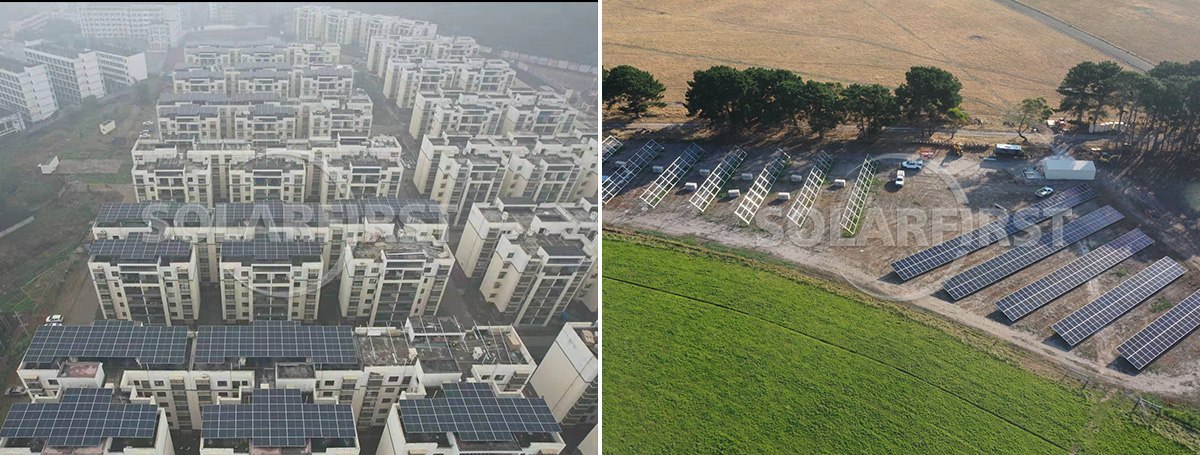What is a distributed photovoltaic power station?
Distributed photovoltaic power stations usually refer to small-scale photovoltaic power generation systems built near users by utilizing scattered resources. They have a relatively small installed capacity and are connected to the distribution network nearby (generally connected to voltage levels of 35 kilovolts and below). This system directly converts solar energy into electrical energy through photovoltaic modules.
At present, the most widely used distributed photovoltaic system is the photovoltaic power generation project built on the rooftops of urban buildings. Such systems must be connected to the public power grid and work in coordination with it to supply power to nearby users. If separated from the support of the public power grid, distributed systems will be unable to guarantee the reliability of power supply and power quality for users.
The core features of distributed photovoltaic power stations:
1. The output power is relatively small and the scale is flexible
• The scale of traditional centralized power stations often reaches hundreds of thousands or even millions of kilowatts, relying on scale to enhance economic efficiency.
• The modular nature of photovoltaic power generation determines that its scale can be large or small, and the system capacity can be flexibly adjusted according to the site requirements.
• The capacity of distributed photovoltaic projects is usually within several thousand kilowatts.
• For instance, the distributed projects implemented by Solar First Group worldwide fully demonstrate this flexibility: In Guangxi, they have tailored distributed roof support solutions for commercial and industrial buildings; In the vast areas of Australia, a specially designed distributed ground support system has been deployed. These cases demonstrate how distributed photovoltaic power can be adapted to local conditions and effectively applied from compact rooftop Spaces to open ground areas.
• Unlike centralized power stations, the scale of photovoltaic power stations has little impact on their power generation efficiency, and thus has a relatively small influence on their economic viability. The return on investment of small-scale systems is no lower than that of large-scale power stations.
2. Minimal pollution and outstanding environmental benefits
• Distributed power stations generate no noise during the power generation process and do not cause air or water pollution.
• It should be noted that the development of distributed photovoltaic power needs to be in harmony and symbiosis with the surrounding urban environment. While making use of clean energy, public concern for the aesthetic appearance of the urban environment should also be taken into account.
3. It can partially relieve the pressure during peak electricity consumption periods
• The maximum output power of distributed photovoltaic power stations occurs during the day, coinciding with the peak electricity demand period at this time.
• However, the energy density of distributed photovoltaic power is relatively low (the power per unit area of the system is only about 100 watts per square meter), and the area of building rooftops suitable for installing photovoltaic modules is limited. Therefore, it cannot fundamentally solve the problem of power shortage and mainly serves as an effective supplement during peak hours.
leave a message
Scan to wechat :
